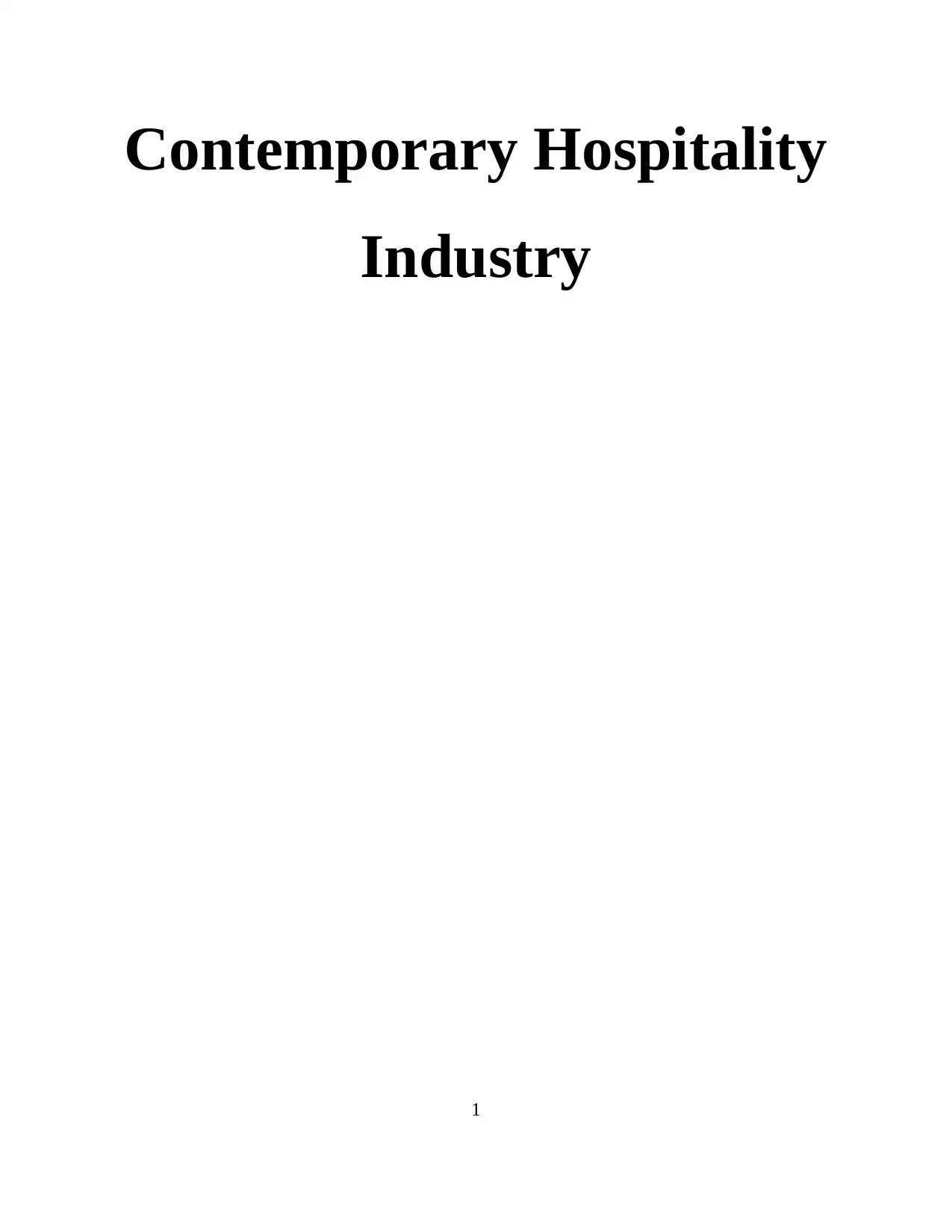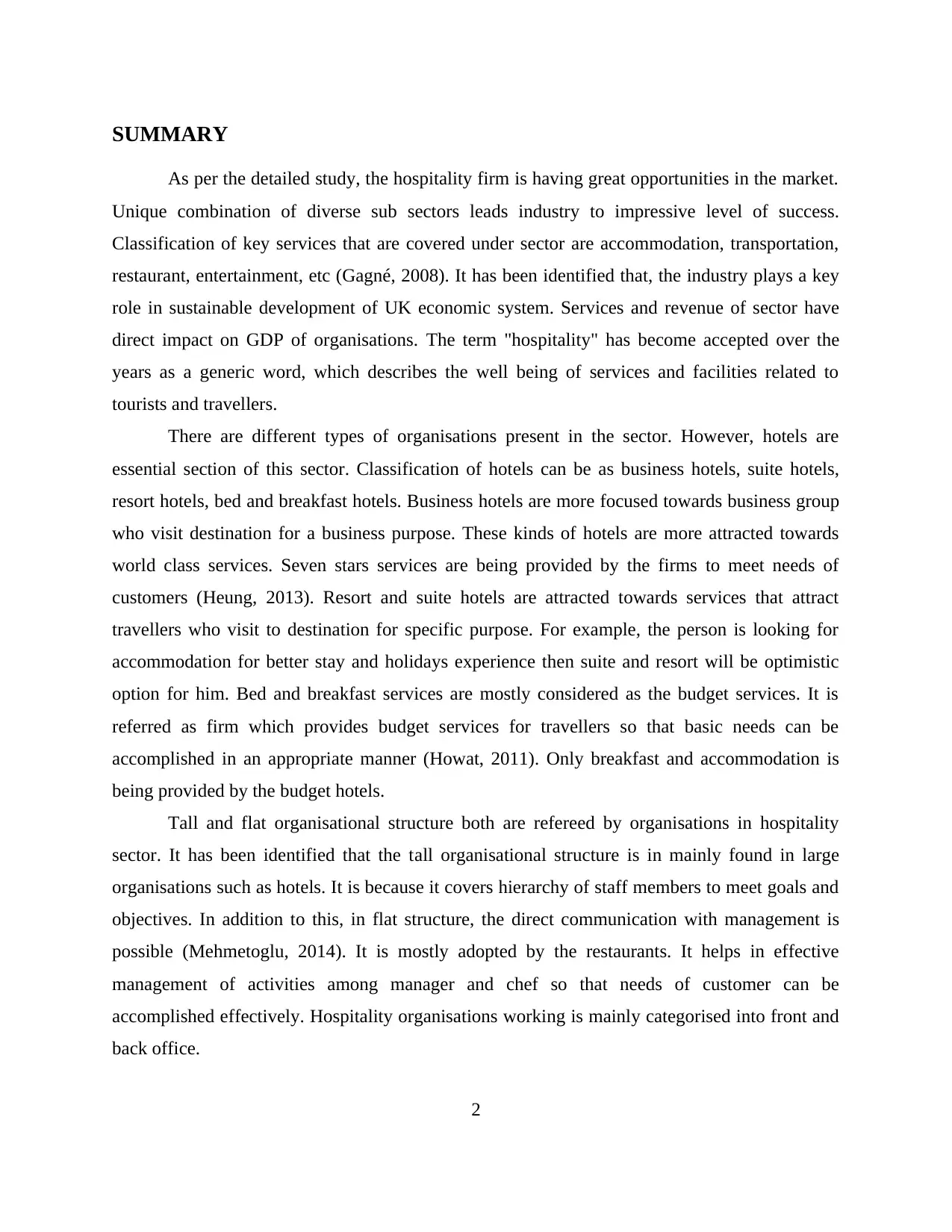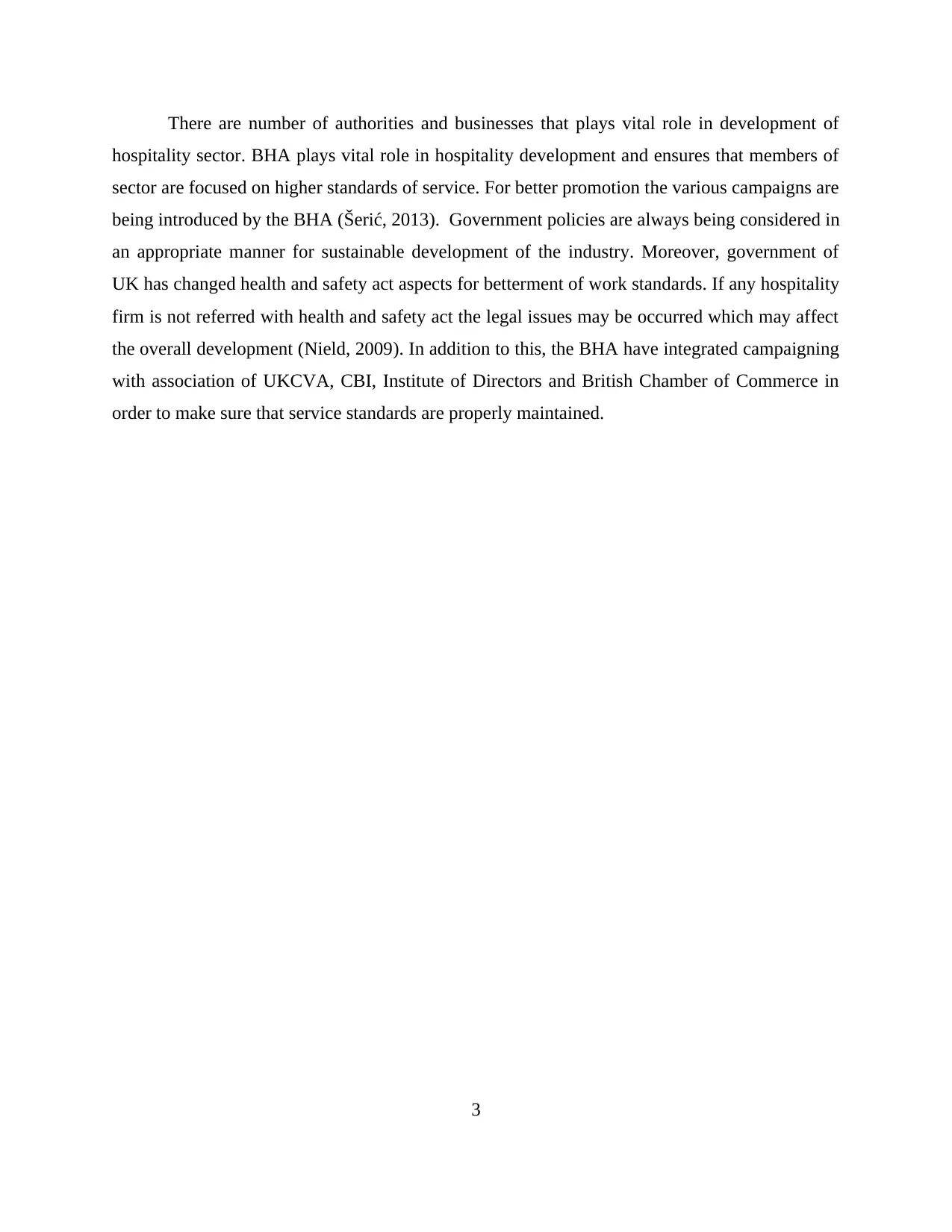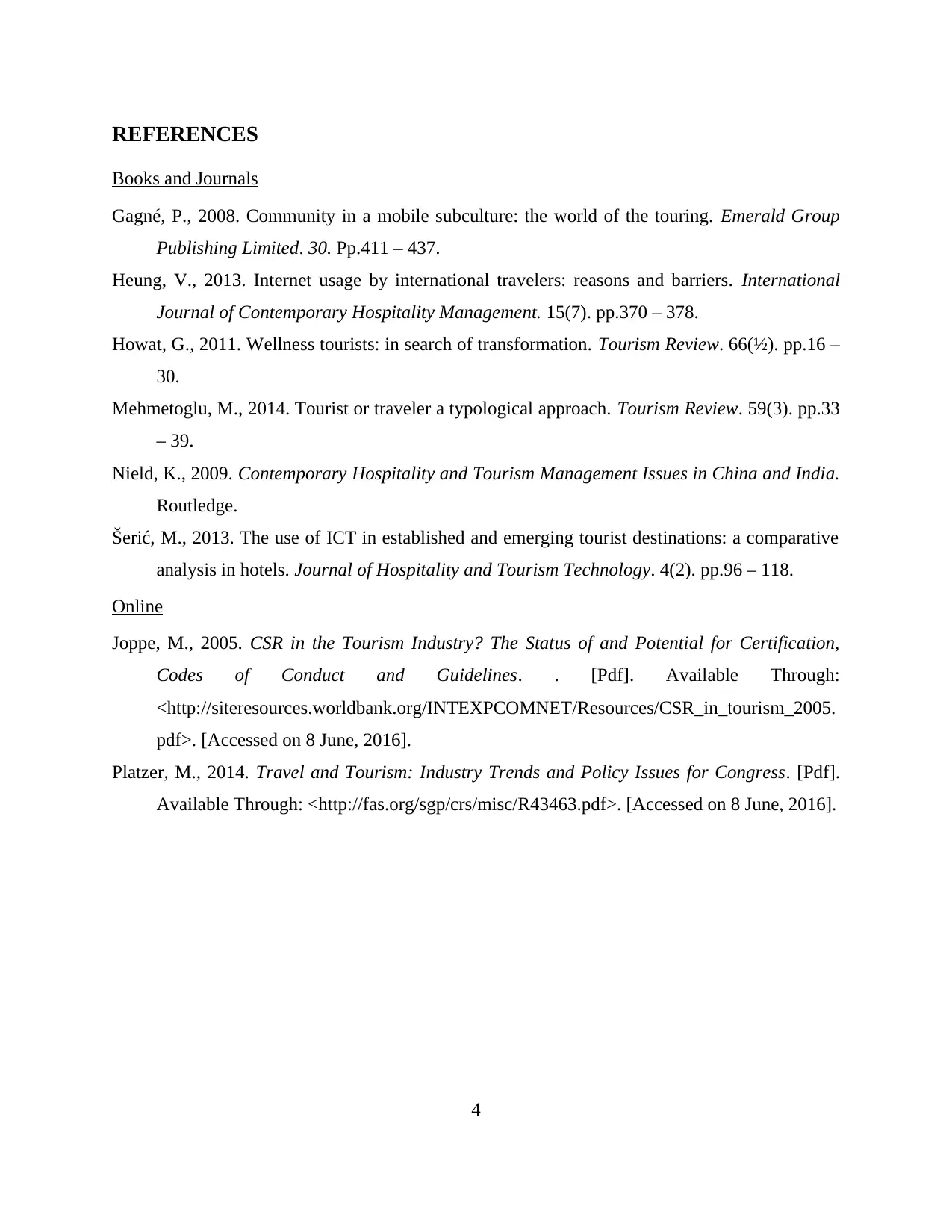Analysis of the Contemporary Hospitality Industry in the UK
VerifiedAdded on 2020/01/23
|4
|845
|42
Report
AI Summary
This report provides a comprehensive overview of the contemporary hospitality industry, examining its diverse sub-sectors like accommodation, transportation, restaurants, and entertainment, highlighting their collective success. It emphasizes the industry's significant role in the sustainable development of the UK economy, including its impact on GDP and the importance of hospitality services for tourists. The report classifies various hotel types (business, suite, resort, and bed and breakfast), organizational structures (tall and flat), and the roles of key organizations like the BHA and government policies. It also covers the significance of health and safety regulations and the collaborative efforts within the industry to maintain service standards. The report concludes with a list of references, including books, journals, and online resources that support the analysis.
1 out of 4





![Managing Accommodation Services: LO1 Report, [University Name]](/_next/image/?url=https%3A%2F%2Fdesklib.com%2Fmedia%2Fimages%2Fnk%2F5305ca6f8ca5407baa9107a72849f4c6.jpg&w=256&q=75)




![[object Object]](/_next/static/media/star-bottom.7253800d.svg)